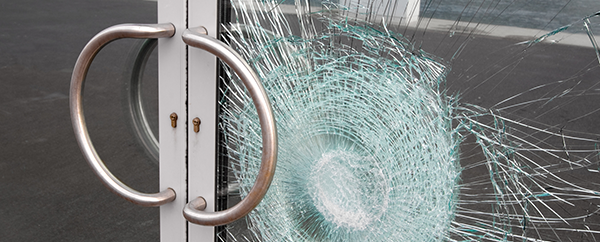How to protect your unoccupied property during the pandemic
Has your business shut down, with all employees furloughed or working from home? Now’s the time to enact safety measures to protect your vacant property (or unoccupied property).
The global community has mobilized to implement unprecedented measures to stop the spread of the novel coronavirus, or COVID-19, pandemic. Most governmental bodies have issued guidance or requirements regarding temporary business shutdowns; in some cases, organizations have taken their own measures to protect their customers and employees.
There are many elements in involved when temporarily suspending operations, but one of the most important to remember is to safeguard property and buildings from damage. Even when operations are proceeding normally, the most severe property damage cases tend to be those that occur during off-hours when staff are not present, allowing the damage to increase exponentially. When it comes to property damage, appropriate safeguards, effective maintenance plans, and early detection are key. If your business has effected a temporary shutdown, check out our guidelines to protect your vacant property to ensure your assets remain secure and undamaged in the meantime.
Guidelines to protect your vacant property
Many of these are tasks can be performed by maintenance or security staff, or other employees that are unable to work from home. Daily or weekly building walk-throughs or walk-arounds can assist in avoiding damage while helping these employees maintain their employment status. The following guidelines (provided by Zurich) to protect vacant property are also steps you can adopt as a process during any kind of unforeseen closure, regardless of the developments regarding COVID-19.
Related: How to manage remote workers when everyone’s working from home
Communicate with vendors and local authorities
- Notify the following organizations that your building is unoccupied, and request to be contacted in the event of an emergency:
- Local authorities and emergency response organizations
- Utility companies (request to be contacted in the event of any unusually high utility usage in the interim)
- Alarm and security companies (also consider updating your security codes)
- Other building owners in the area
- Consider suspending mail and delivery services to the building or designate someone to process mail daily.
Prepare for inclement weather
- Adjust the thermostat to account for whatever seasonal weather patterns are currently affecting your area. If appropriate, set central heating to 55°F to keep pipes from freezing, and air conditioning to 85°F to protect against humidity and mold.
- Store any exterior furniture inside and close all doors, windows, and vents to prevent damage from wind and rain.
- With tornado and hurricane season upon us, take additional precautions as needed to secure your building and contents.
Continue regular maintenance
- If possible, take steps to ensure any required seasonal maintenance is completed on schedule. If appropriate, modify your maintenance schedule or defer as needed, but make sure critical maintenance items are not dropped, thereby putting your property at unnecessary risk.
- Turn off all utilities not necessary for preventing damage or securing the premises.
- Turn off all non-essential appliances and electrical equipment.
- Consider webcams and sensors to detect any unusual motion, heat or water flow.
- Keep all fire detection and protection systems in service (sprinkler systems, smoke detectors, etc.) and inspect this equipment on a weekly basis.
- Check the roof for any evidence of unauthorized access via skylights, roof hatches, or stairwell doors, etc. Also look for structure damage, clogged roof drains or vegetation growth.
- Ensure any sump pumps are working properly.
- Prevent leaks by keeping gutters clear and insulating pipes.
- Maintain all alarms designed to alert you of property damage (burst pipes, etc.), so that any damages can be mitigated as quickly as possible, even when staff are not on-site.
- Remove any debris or hazardous materials from the premises, such as combustibles, pollutants or chemicals, to eliminate the potential for fire or spills.
Inspect your property regularly
- Maintain staff to continue regular daily rounds both inside and out of your facility, if possible.
- If not, you should conduct frequent walk-throughs at various times of the day and night. Properties are often not inspected at night, but it is an excellent opportunity to examine exterior lighting to determine if it is functioning or adequate.
- We recommend weekly inspections at minimum to check exteriors for any signs of vandalism or trespassing, and interiors for any leaks or other damages.
Related: How to create a fire protection and prevention plan for businesses
Ensure your building’s security
- Lock all doors and accessible windows, preferably with deadbolts. If necessary, install additional locks.
- Verify that all security systems are operational.
- Minimize the risk of vandalism by utilizing appropriate exterior and interior lighting. Maintain exterior landscaping as needed (mowing lawns, etc.) to make the property appear occupied, neat and well looked-after.
While it’s never a good time to sustain property damage, a temporary suspension of operations can create additional vulnerabilities and complications that can negatively affect your business. Consider implementing any applicable items from these guidelines to protect your vacant property into your ongoing risk management efforts.
This article was originally published in our Tribal blog. It has been modified to better fit the needs of Arrowhead’s producers and their commercial clients.

